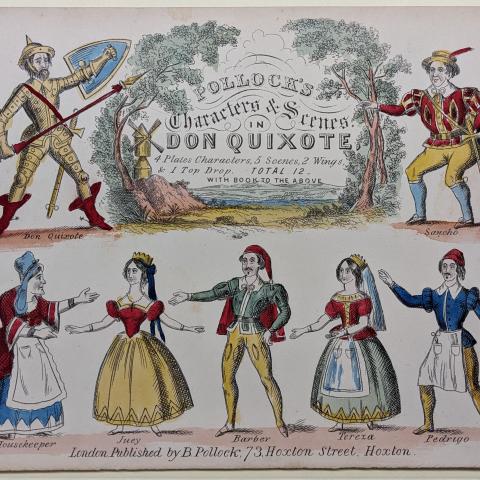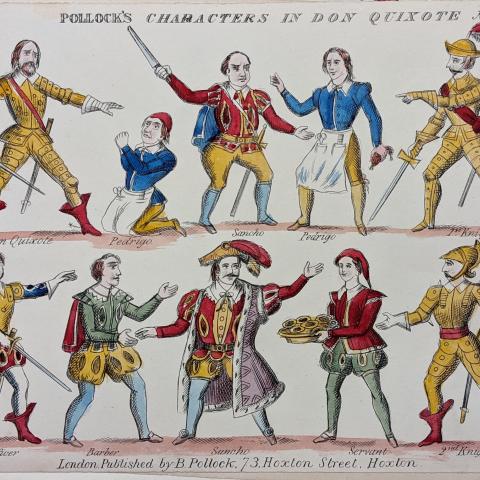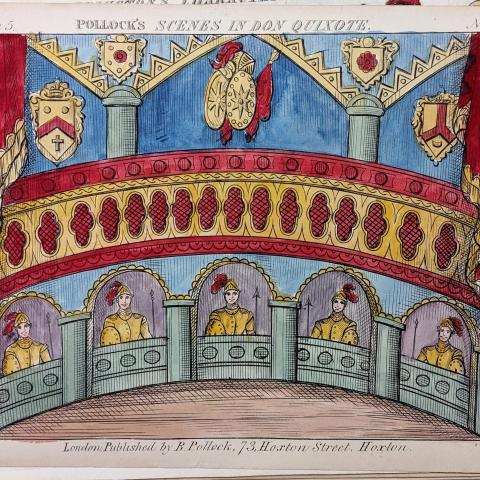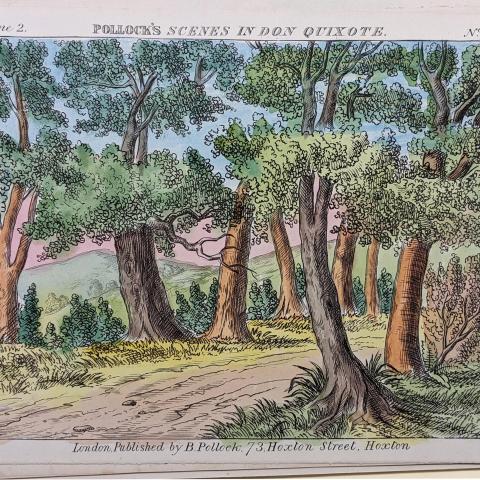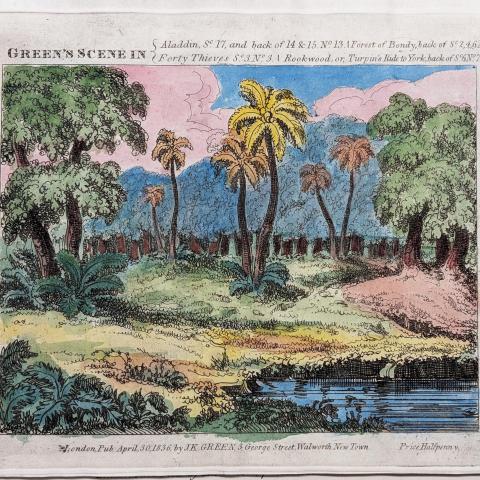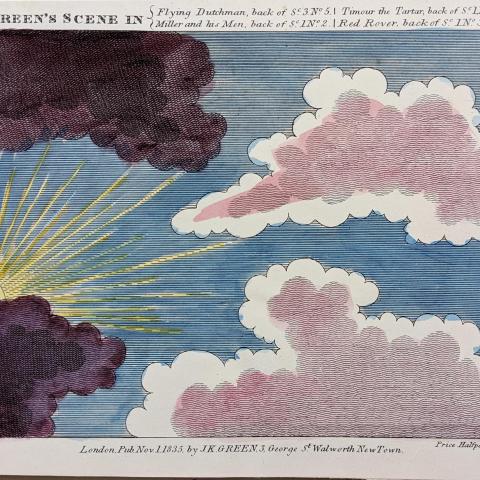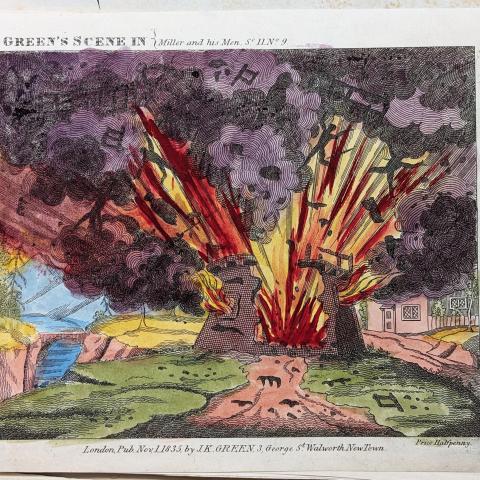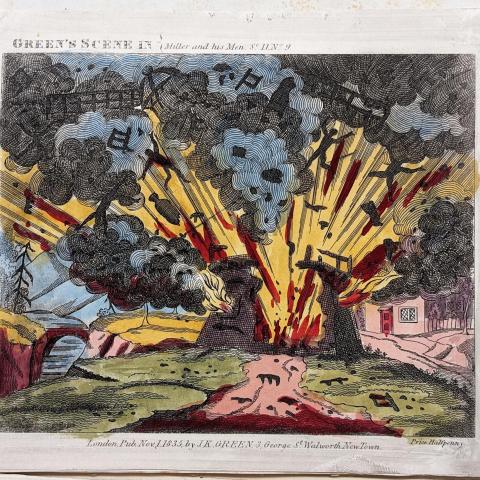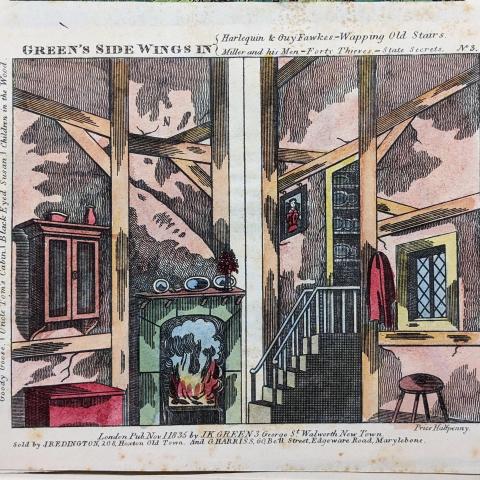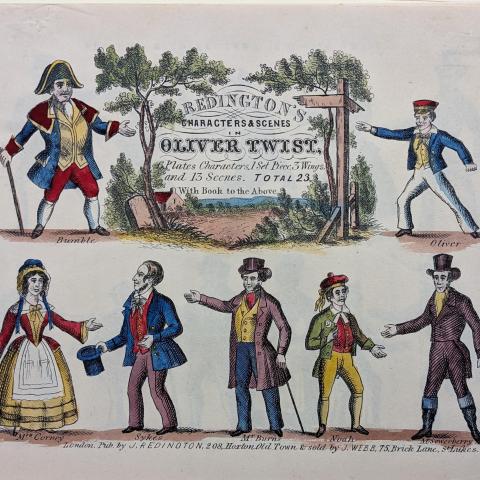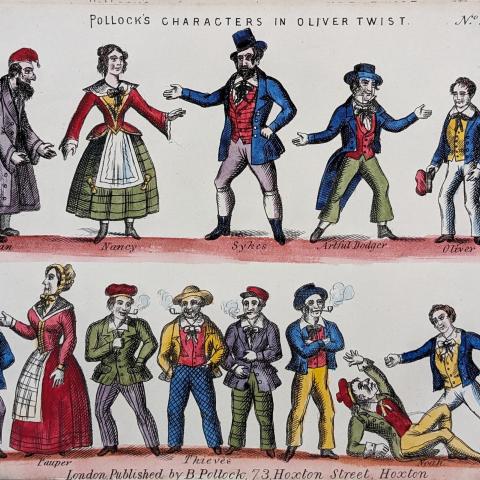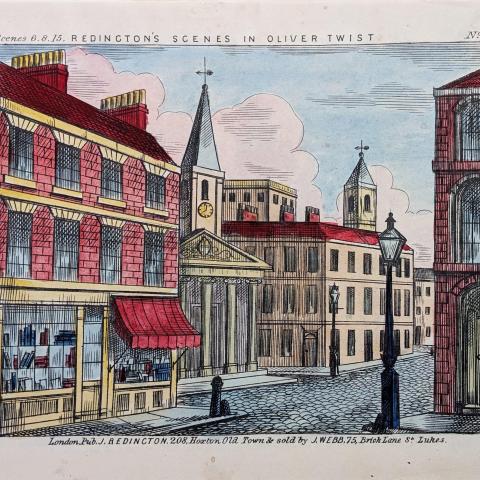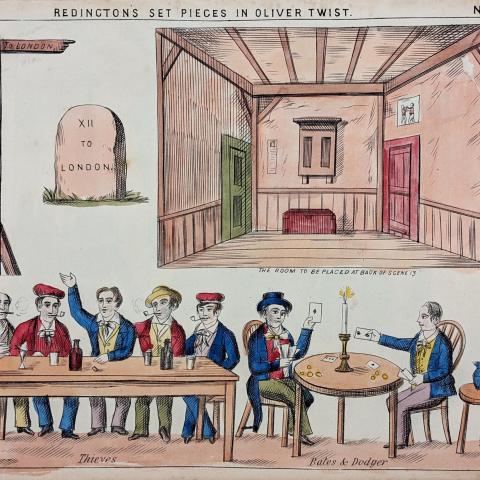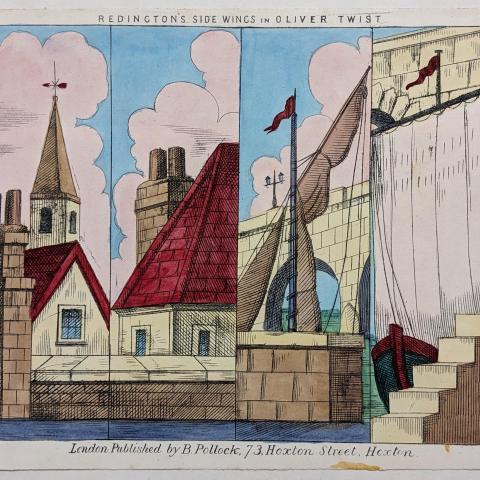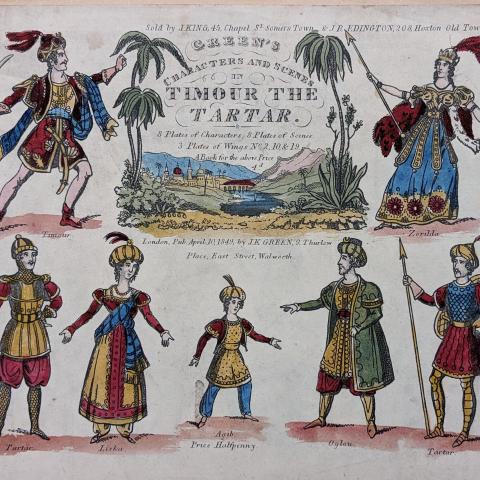Miniature Magic: 19th Century English Toy Theatres
August 26, 2025
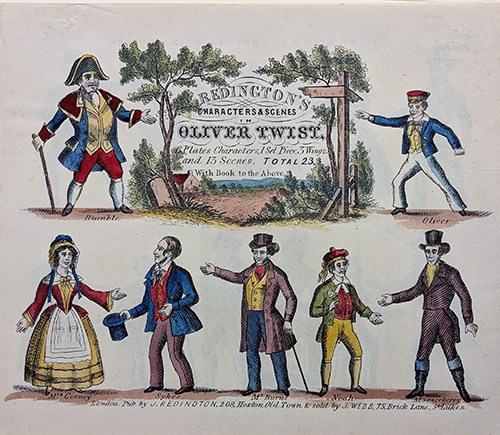 Toy theatres, or juvenile dramas, brought the 19th century theatre world into Victorian homes in miniature form. At the end of the 18th century, English printers began selling full-length color theatrical portraits of actors in costume from popular plays. By the early 19th century printers expanded their offerings and began to sell sheets printed with a full cast of characters, scenery, props, and other elements from popular contemporary plays, so children could recreate complete theatrical dramas at home, in miniature. The Harry Stone Dickens Collection contains toy theatre sheet components for a number of different plays. Many are adaptations of Dickens' works, but the collection also includes non-Dickens stories like Don Quixote, Douglas, Jack the Giant Killer and The Miller and His Men.
Toy theatres, or juvenile dramas, brought the 19th century theatre world into Victorian homes in miniature form. At the end of the 18th century, English printers began selling full-length color theatrical portraits of actors in costume from popular plays. By the early 19th century printers expanded their offerings and began to sell sheets printed with a full cast of characters, scenery, props, and other elements from popular contemporary plays, so children could recreate complete theatrical dramas at home, in miniature. The Harry Stone Dickens Collection contains toy theatre sheet components for a number of different plays. Many are adaptations of Dickens' works, but the collection also includes non-Dickens stories like Don Quixote, Douglas, Jack the Giant Killer and The Miller and His Men.
Juvenile drama enthusiasts would purchase the sheets from a printer’s shop, and then cut them out for use in miniature toy theatres at home. A variety of styles were available, some colored and elaborately decorated, others uncolored or more plain with decorations made out of tinsel and other materials sold separately so children could embellish the standard prints themselves. Theater enthusiasts could also purchase playbooks, often with abridged versions of the original texts. Playbooks included dialogue, and would tell the performer which characters to use and when to change the background scenes. In addition to the individual toy theatre sheets, Special Collections & Archives has one playbook for Oliver Twist adapted for Benjamin Pollock’s characters and scenes.
English dramatist and painter Isaac Pocock wrote the melodrama The Miller and His Men in 1813, and it was later adapted into toy theatre form. The grand finale includes a dramatic mill explosion that takes out a band of robbers. Special Collections & Archives has more than one representation of the memorable mill explosion scene, which allows for viewing the hand coloring variations that could occur in the process of creating a colored sheet. Unfortunately, the sheets are undated, so it is unclear if these sheets originate from the same period of time, or if the coloring variations correlate with the year of their creation.
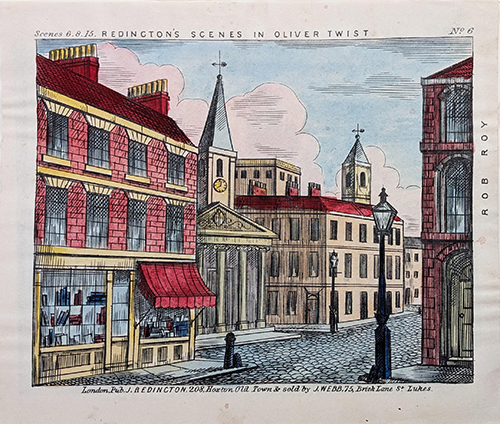 The majority of the sheets in the Stone Dickens Collection were printed by John Redington, John Kilby Green, or Benjamin Pollock. John Redington opened a theatrical print warehouse in London on Hoxton Street in 1851 and sold prints by publisher Green. When Green died in 1860, Redington bought his engraved copper plates used for printing the sheets. After Redington passed in 1876, his daughter Eliza and her husband Benjamin Pollock kept the business running. Pollock continued running the printing and toy business until his death in 1937.
The majority of the sheets in the Stone Dickens Collection were printed by John Redington, John Kilby Green, or Benjamin Pollock. John Redington opened a theatrical print warehouse in London on Hoxton Street in 1851 and sold prints by publisher Green. When Green died in 1860, Redington bought his engraved copper plates used for printing the sheets. After Redington passed in 1876, his daughter Eliza and her husband Benjamin Pollock kept the business running. Pollock continued running the printing and toy business until his death in 1937.
Toy theatre sheets served as both souvenirs for theatre fans and playthings for children to reenact, and perhaps reinvent, stories viewable on contemporary theatre stages. They fell in popularity by the late 19th century, but had a brief revival in the early 20th century. They are records of a form of popular entertainment, and provide insight into British youth and play, as well as the visual world of English theatre.
Image Gallery
Post tagged as: special collections, ephemera, rare books, international
Read more Peek in the Stacks blog entries